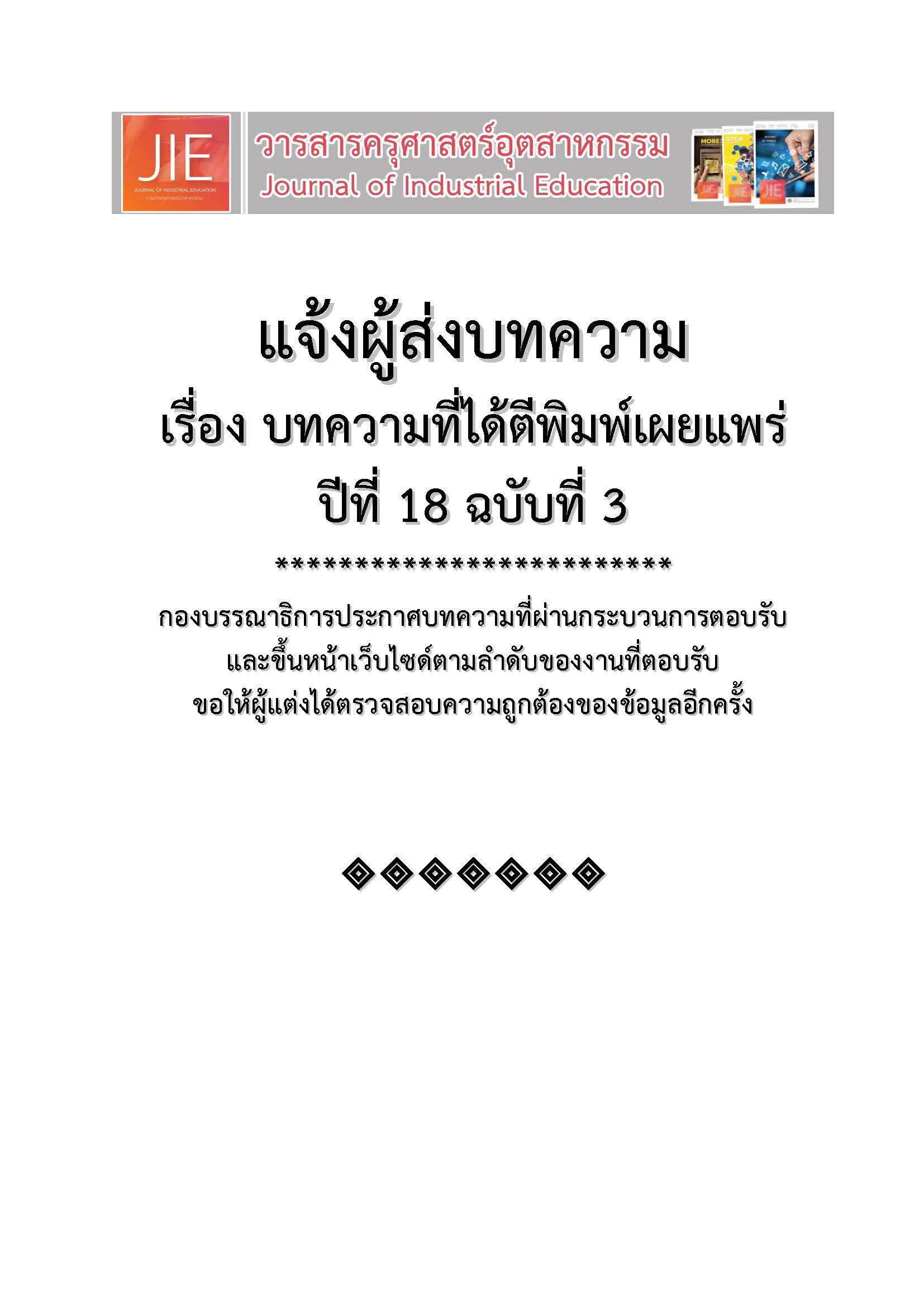USE OF AN INTERACTIVE SIMULATION: PROJECTILE MOTION
Main Article Content
Abstract
The objectives of this research were to develop an instructional media and to investigate the understanding of the participating students using the interactive simulation media on projectile motion. The target group consisted of 134 Construction Engineering Technology freshmen in the Department of Industrial Technology, Faculty of Science and Technology, enrolling in the Fundamental Physics course in the first semester of the 2018 academic year. The research instruments included the interactive simulation media on projectile motion which was operated on the website,
https://phet.colorado.edu/en/simulation/projectile-motion, the projectile motion worksheets, and a semi-structured interview. The research results were that the instructional media was derived and, when it was implemented together with the worksheets, it enabled the students to clearly perceive various patterns of projectile motion as well as to understand about the topic better. The media was convenient to implement in lecture classes, could save instructional media preparation time, did not require payment, and was suitable to use in physics classes. From examining the understanding of the students from their worksheets and the semi-structure interview, it was revealed that they could understand the topic better and perceive the motion more clearly after the instructional media was implement in class. Thus, the media was able to implement in physics classes and could be developed as an instructional media on projectile motion.
Article Details
"The opinions and contents including the words in papers are responsibility by the authors."
"ข้อคิดเห็น เนื้อหา รวมทั้งการใช้ภาษาในบทความถือเป็นความรับผิดชอบของผู้เขียน"
References
Suvarna K.G., Sandhya D.G. and Chanakya P. (2015). Augmented Reality in Enchancing Qualitative Education. International Journal of Computer Application, 132(14), p.41-45.
Adams W. K., et al. 2008. A Study of Educational Simulations Part I - Engagement and Learning. Journal of Interactive Learning Research, 19(3), p.1-33.
Adams W. K., et al. 2008. A Study of Educational Simulations Part II - Engagement and Learning. Journal of Interactive Learning Research, 19(4), p.1-38.
Perkins K., et al. 2006. PhET: Interactive Simulations for Teaching and Learning Physics. The Physics Teacher, 44(18), p.18-23.
Finkelstein N. D., et al. 2005. When learning about the real world is better done virtually: A study of substituting computer simulations for laboratory equipment. Physical Review Special Topics – Physics Education Research 1, 010103, p.1-8.
Martín-Ramos P., Silva M.R. and Pereira da Silva P.S. 2017. Smartphones in the teaching of Physics Laws: Projectile motion. Revista Iberoamericana de Educación a Distancia, 20(2), p.213-230.
Ukwumonu A.J., Mbela I.A. and Song L.A. 2015. Spreadsheet Simulation for Demonstrating Projectile Motion. International Journal of Management Science, 6(1), p.32-38.
Adom D., Hussein E.K. and Agyem J.A. 2018. Theoretical and Conceptual Framework: Mandatory Ingredients of a Quality Research. International Journal of Scientific Research, 7(1), p.438-441.
Dilber R., Karaman I. and Duzgun B. 2009. High school students’ understanding of projectile motion concept. Educational Research and Evaluation, 15(3), p.203-222.
Jimoyiannis A. & Komis V. 2001. Computer simulations in physics teaching and learning: a case study on students’ understanding of trajectory motion. Computer&Education, 36, p.183-204.
McKagan S.B., et al. 2008. Developing and researching PhET simulations for teaching quantum mechanics. American Journal of Physics, 76(406), p.406-417.
Adams W.C. 2015. Handbook of Practical program Evaluation. San Francisco: Jossey-Bass.

